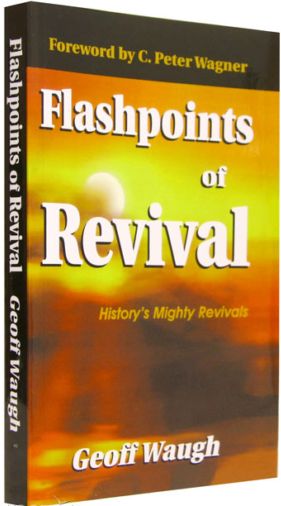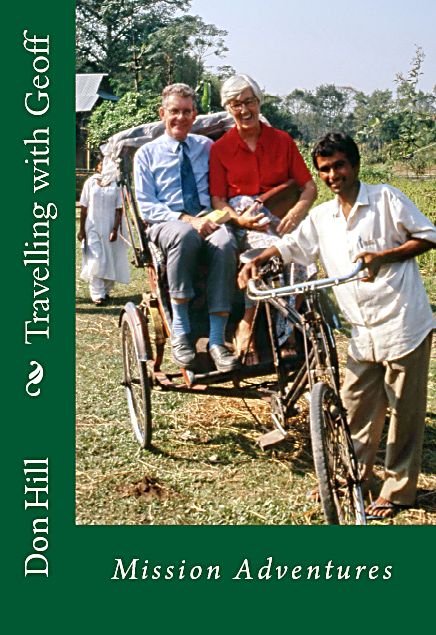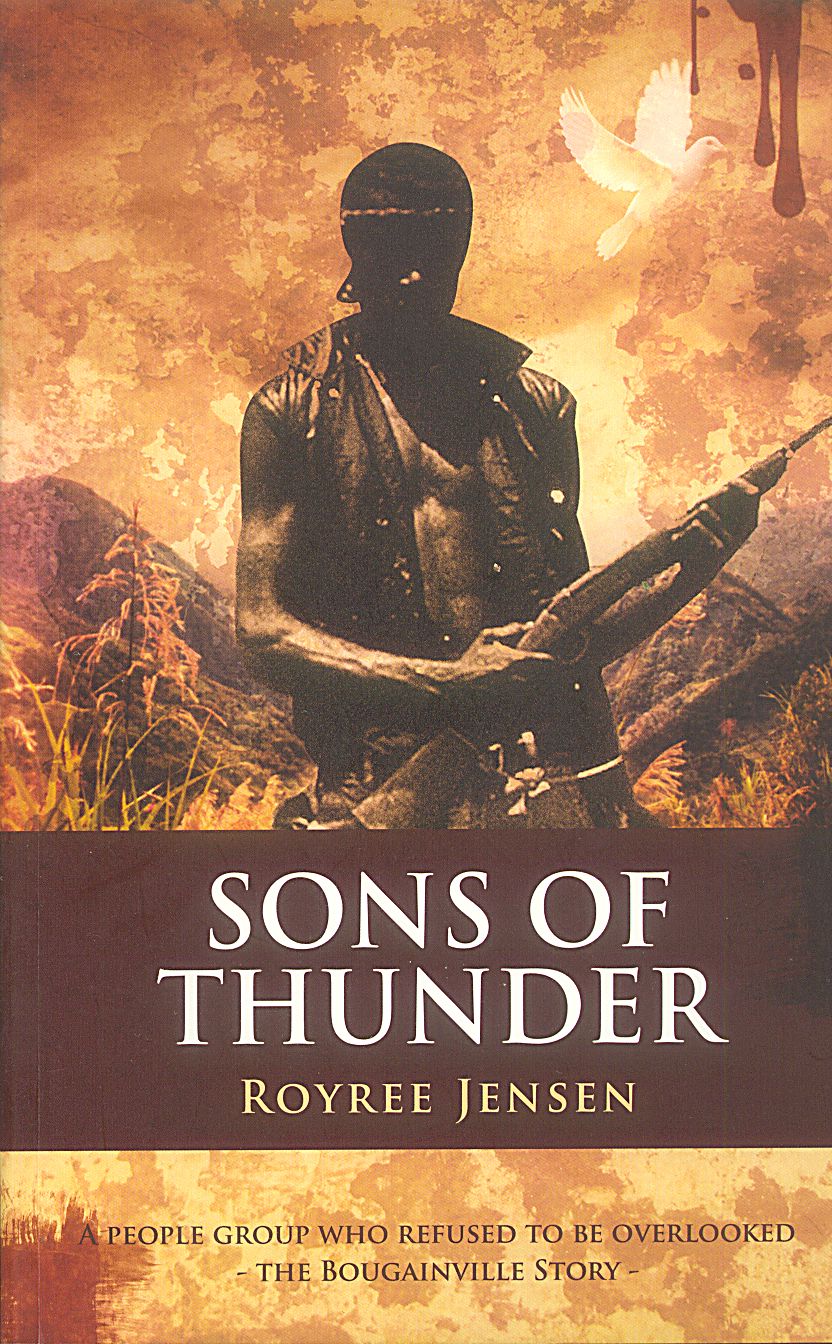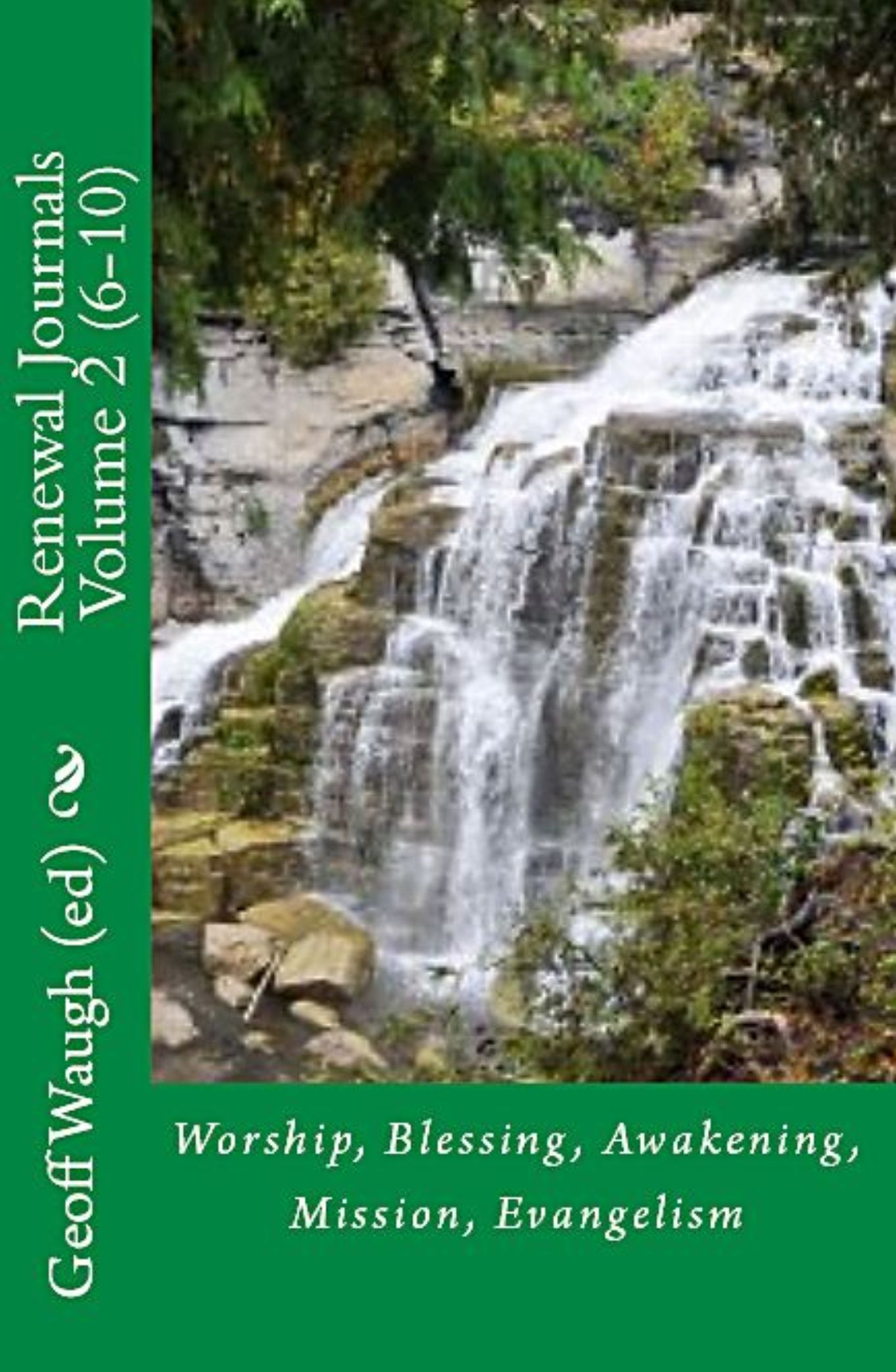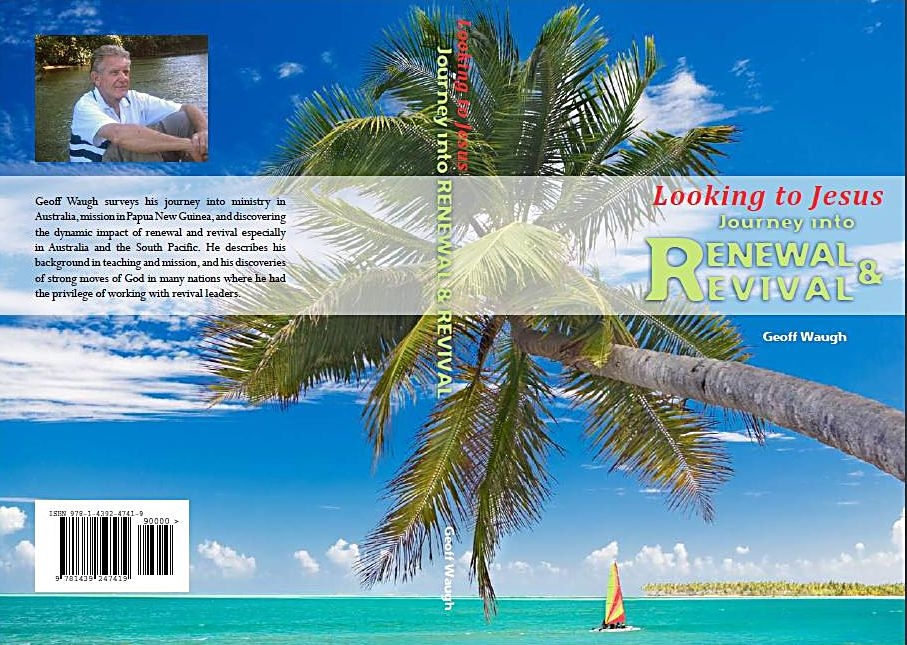Early Nineteenth-Century Revivals:
Frontier and Missionary Revivals
See also Revivals Index – https://renewaljournal.com/revivals-index/
1. Eighteenth-Century Revivals: Great Awakening & Evangelical Revivals
2. Early Nineteenth-Century Revivals: Frontier and Missionary Revivals
3. Mid-Nineteenth Century Revivals: Prayer Revivals
4. Early Twentieth Century Revivals: Worldwide Revivals
5. Mid-twentieth Century Revivals: Healing Evangelism Revivals
6. Late Twentieth Century Revivals: Renewal and Revival
7. Final Decade, Twentieth Century Revivals: Blessing Revivals
8. Twenty-First Century Revivals: Transforming Revivals
Share good news – Share this page freely
Copy and share this link on your media, eg Facebook, Instagram, Emails:
Early Nineteenth-Century Revivals: Frontier & Missionary Revivals:
https://renewaljournal.com/2014/04/28/early-nineteenth-revivals-frontierandmissionary-revivals/
FREE RENEWAL JOURNAL SUBSCRIPTION: for updates, new Blogs & free offers
FREE PDF books on the Main Page
Edwin Orr’s research identified two major awakenings in Europe and North America in the nineteenth century following the first Great Awakening of the eighteenth century. His earlier writings identified a second general awakening in 1798-1812 and a third general awakening in the 1830s, with another strong resurgence of revival in 1858-1860. However, his later writings identified the second general awakening as covering 1798 to the 1830s, interrupted by the British-American War of 1812-15, and producing a wave of missionary societies early in the nineteenth century. Orr then identified the third general awakening as 1858-1860, preceding the American Civil War (1861-1865).
Flashpoints:
1800 – June-July: Red and Gasper Rivers, North America (James McGready)
1801 – August: Cane Ridge, North America (Barton Stone)
1821 – October: Adams, America (Charles Finney)
John Erskine’s eighteenth century voluminous correspondence from Edinburgh urging prayer for revival struck a chord in New England. In 1794 a score of New England ministers, led by Baptists Isaac Backus and Stephen Gano, issued a circular letter inviting ministers and churches of all denominations to engage in and promote a Concert of Prayer for spiritual awakening commencing on the first Tuesday in January, Epiphany, 6 January 1795. The response was immediate, cordial and earnest. Presbyterian Synods in New York and New Jersey recommended the call to all their churches, as did the Methodist Episcopal Church. Congregational and Baptist associations joined in, and the Moravian and Reformed communities co-operated. Some met quarterly; most met monthly.
Stirrings of revival affected Connecticut from October 1798 in West Simsbury with Jeremiah Hallock where the congregation experienced deep conviction of sin and many leading infidels became strong converts. Late in October similar movements of repentance spread in the state including in New Hartford. “On a Sunday in November, the Spirit of God manifested Himself in the public service, and a general work of revival began in earnest. Meetings were commenced in various parts of the town, attended by deeply affected crowds, though without convulsions or outcries.” Soon over 50 families became involved. In Plymouth, in February 1799 “‘like a mighty wind’ the Spirit came upon the people.” Revival spread through he United States at the turn of the century as it was affecting churches in Britain. Orr argues that prayer for revival was being answered in the face of growing ‘revolution and infidelity’ in the wake of the French Revolution.
1800 – June: Red and Gasper Rivers, America (James McGready)

James McGready (1763-1817), a Presbyterian minister in Kentucky, promoted the Concert of Prayer every first Monday of the month, and urged his people to pray for him at sunset on Saturday evening and sunrise Sunday morning. Revival swept Kentucky in the summer of 1800.
McGready had three small congregations in Muddy River, Red River and Gasper River in Logan County in the southwest of the state. Most of the people were refugees from all states in the Union who fled from justice or punishment. They included murderers, horse thieves, highway robbers, and counterfeiters. The area was nicknamed Rogues Harbour.
The first real manifestations of God’s power came, however, in June 1800. Four to five hundred members of McGready’s three congregations, plus five ministers, had gathered at Red River for a “camp meeting” lasting several days. On the final day, “a mighty effusion of [God’s] Spirit” came upon the people, “and the floor was soon covered with the slain; their screams for mercy pierced the heavens.”
Convinced that God was moving, McGready and his colleagues planned another camp meeting to be held in late July 1800 at Gasper River. They had not anticipated what occurred. An enormous crowd as many as 8,000 began arriving at the appointed date, many from distances as great as 100 miles. … Although the term camp meeting was not used till 1802, this was the first true camp meeting where a continuous outdoor service was combined with camping out. …
At a huge evening meeting lighted by flaming torches … a Presbyterian pastor gave a throbbing message … McGready recalled: “The power of God seemed to shake the whole assembly. Toward the close of the sermon, the cries of the distressed arose almost as loud as his voice. After the congregation was dismissed the solemnity increased, till the greater part of the multitude seemed engaged in the most solemn manner. No person seemed to wish to go home hunger and sleep seemed to affect nobody eternal things were the vast concern. Here awakening and converting work was to be found in every part of the multitude; and even some things strangely and wonderfully new to me.”
These frontier revivals became an increasing emphasis in American revivalism. One unfortunate result was the identification of revival in America with ‘revivalism’ identified as crusades or campaigns called revivals and tending to emphasize emotionalism, hell-fire preaching, and the sawdust trail – used in nineteenth-century revivals to lay the dust or soak up the moisture on the ground of the revival meetings.
Back to top
1801 – August: Cane Ridge, North America (Barton Stone)

Impressed by the revivals in 1800, Barton Stone (1772-1844), a Presbyterian minister, organized similar meetings in 1801 in his area at Cane Ridge, north east of Lexington, Kentucky. A huge crowd of around 12,500 attended in over 125 wagons including people from Ohio and Tennessee. At that time Lexington, the largest town in Kentucky, had less than 1,800 citizens. Presbyterian, Methodist and Baptist preachers and circuit riders formed preaching teams, speaking simultaneously in different parts of the camp grounds, all aiming for conversions.
James Finley, later a Methodist circuit rider, described it:
“The noise was like the roar of Niagara. The vast sea of human being seemed to be agitated as if by a storm. I counted seven ministers, all preaching at one time, some on stumps, others in wagons and one standing on a tree which had, in falling, lodged against another. … I stepped up on a log where I could have a better view of the surging sea of humanity. The scene that then presented itself to my mind was indescribable. At one time I saw at least five hundred swept down in a moment as if a battery of a thousand guns had been opened upon them, and then immediately followed shrieks and shouts that rent the very heavens.”
A Presbyterian minister, the Rev. Moses Hoge, wrote,
“The careless fall down, cry out, tremble, and not infrequently are affected with convulsive twitchings … Nothing that imagination can paint, can make a stronger impression upon the mind, than one of those scenes. Sinners dropping down on every hand, shrieking, groaning, crying for mercy, convulsed; professors praying, agonizing, fainting, falling down in distress for sinners or in raptures of joy! … As to the work in general there can be no question but it is of God. The subject of it, for the most part, are deeply wounded for their sins, and can give a clear and rational account of their conversion.”
Revival early in the nineteenth century not only impacted the American frontier, but also towns and especially colleges. One widespread result in America, as in England, was the formation of missionary societies to train and direct the large numbers of converts filled with missionary zeal.
That Second Great Awakening produced the modern missionary movement and it’s societies, Bible societies, saw the abolition of slavery, and many other social reforms. The Napoleonic Wars in Europe (1803 15) and the American War of 1812 (1812 15) dampened revival zeal, but caused many to cry out to God for help, and fresh stirrings of revival continued after that, especially with Charles G. Finney.
Back to top
1821 – October: Adams, North America (Charles Finney)

Charles Finney (1792-1875) became well known in revivals in the nineteenth century. A keen sportsman and young lawyer, he had a mighty empowering by God’s Spirit on the night of his conversion on Wednesday 10 October 1821. That morning the Holy Spirit convicted him on his way to work. So he spent the morning in the woods near his small town of Adams in New York State, praying. There he surrendered fully to God. He walked to his law office that afternoon profoundly changed and in the afternoon assisted his employer Squire Wright to set up a new office. That night he was filled with the Spirit. He describes that momentous night in his autobiography:
“By evening we had the books and furniture adjusted, and I made a good fire in an open fireplace, hoping to spend the evening alone. Just at dark Squire W , seeing that everything was adjusted, told me good night and went to his home. I had accompanied him to the door, and as I closed the door and turned around my heart seemed to be liquid within me. All my feelings seemed to rise and flow out and the thought of my heart was, “I want to pour my whole soul out to God.” The rising of my soul was so great that I rushed into the room back of the front office to pray.
“There was no fire and no light in this back room; nevertheless it appeared to me as if it were perfectly light. As I went in and shut the door after me, it seemed to me as if I met the Lord Jesus Christ face to face. It seemed to me that I saw him as I would see any other man. He said nothing, but looked at me in such a manner as to break me right down at his feet. It seemed to me a reality that he stood before me, and I fell down at his feet and poured out my soul to him. I wept aloud like a child and made such confession as I could with my choked words. It seemed to me that I bathed his feet with my tears, and yet I had no distinct impression that I touched him.
“I must have continued in this state for a good while, but my mind was too much absorbed with the interview to remember anything that I said. As soon as my mind became calm enough I returned to the front office and found that the fire I had made of large wood was nearly burned out. But as I turned and was about to take a seat by the fire, I received a mighty baptism of the Holy Spirit. Without any expectation of it, without ever having the thought in my mind that there was any such thing for me, without any memory of ever hearing the thing mentioned by any person in the world, the Holy Spirit descended upon me in a manner that seemed to go through me, body and soul. I could feel the impression, like a wave of electricity, going through and through me. Indeed it seemed to come in waves of liquid love, for I could not express it in any other way. It seemed like the very breath of God. I can remember distinctly that it seemed to fan me, like immense wings.
“No words can express the wonderful love that was spread abroad in my heart. I wept aloud with joy and love. I literally bellowed out the unspeakable overflow of my heart. These waves came over me, and over me, and over me, one after another, until I remember crying out, ‘I shall die if these waves continue to pass over me.’ I said, ‘Lord, I cannot bear any more,’ yet I had no fear of death.”
That night a member of the church choir which Finney led called in at his office, amazed to find the former sceptic in a “state of loud weeping” and unable to talk to him for some time. That young friend left and soon returned with an elder from the church who was usually serious and rarely laughed. “When he came in,” Finney observed, “I was very much in the state in which I was when the young man went out to call him. He asked me how I felt and I began to tell him. Instead of saying anything he fell into a most spasmodic laughter. It seemed as if it was impossible for him to keep from laughing from the very bottom of his heart.”
Next morning, with “the renewal of these mighty waves of love and salvation” flowing through him, Finney witnessed to his employer who was strongly convicted and later made his peace with God.
That morning a deacon from the church came to see Finney about a court case due to be tried at ten o’clock. Finney told him he would have to find another lawyer, saying, “I have a retainer from the Lord Jesus Christ to plead his cause and I cannot plead yours.” The astonished deacon later became more serious about God and settled his case privately.
Finney described the immediate change in his own life and work:
“I soon sallied forth from the office to converse with those whom I might meet about their souls. I had the impression, which has never left my mind, that God wanted me to preach the Gospel, and that I must begin immediately. …
“I spoke with many persons that day, and I believe the Spirit of God made lasting impressions upon every one of them. I cannot remember one whom I spoke with, who was not soon after converted. …
“In the course of the day a good deal of excitement was created in the village because of what the Lord had done for my soul. Some thought one thing and some another. At evening, without any appointment having been made, I observed that the people were going to the place where they usually held their conference and prayer meetings. …
“I went there myself. The minister was there, and nearly all the principal people in the village. No one seemed ready to open the meeting, but the house was packed to its utmost capacity. I did not wait for anybody, but rose and began by saying that I then knew that religion was from God. I went on and told such parts of my experience as it seemed important for me to tell. …
“We had a wonderful meeting that evening, and from that day we had a meeting every evening for a long time. The work spread on every side.
“As I had been a leader among the young people I immediately appointed a meeting for them, which they all attended. … They were converted one after another with great rapidity, and the work continued among them until only one of their number was left unconverted.
“The work spread among all classes, and extended itself not only through the village but also out of the village in every direction.”
Finney continued for the rest of his life in evangelism and revival. During the height of the revivals he often saw the awesome holiness of God come upon people, not only in meetings but also in the community, bringing multitudes to repentance and conversion. Wherever he travelled, instead of bringing a song leader he brought someone to pray. Often Father Nash, his companion, was not even in the meetings but in the woods praying. Finney founded and taught theology at Oberlin College which pioneered co education and enrolled both blacks and whites. His Lectures on Revival were widely read and helped to fan revival fire in America and England.
Finney emphasized Hosea 10:12, “Break up your fallow ground: for it is time to seek the Lord till He comes and rains righteousness on you.” He believed that if we do our part in repentance and prayer, God would do his in sending revival.
He preached in Boston for over a year during the revival in 1858-1859. Many reports tell of the power of God producing conviction in people not even in the meetings. At times people would repent as they sailed into Boston harbour, convicted by the Holy Spirit.
Various revival movements influenced society in the nineteenth century but 1858 in America and 1859 in Britain were outstanding. Typically, it followed a low ebb of spiritual life. Concerned Christians began praying earnestly and anticipating a new move of God’s Spirit.
Back to top
Back to Summaries of Revivals Contents
See also Revivals Index – https://renewaljournal.com/revivals-index/
GENERAL BLOGS INDEX
BLOGS INDEX 1: REVIVALS (BRIEFER THAN REVIVALS INDEX)
BLOGS INDEX 2: MISSION (INTERNATIONAL STORIES)
BLOGS INDEX 3: MIRACLES (SUPERNATURAL EVENTS)
BLOGS INDEX 4: DEVOTIONAL (INCLUDING TESTIMONIES)
BLOGS INDEX 5: CHURCH (CHRISTIANITY IN ACTION)
BLOGS INDEX 6: CHAPTERS (BLOGS FROM BOOKS)
BLOGS INDEX 7: IMAGES (PHOTOS AND ALBUMS)
BACK TO MAIN PAGE
FREE SUBSCRIPTION: for new Blogs & free offers
Free PDF books on the Main Page
Share good news – Share this page freely
Copy and share this link on your media, eg Facebook, Instagram, Emails:
Early Nineteenth-Century Revivals: Frontier & Missionary Revivals:
https://renewaljournal.com/2014/04/28/early-nineteenth-revivals-frontierandmissionary-revivals/

